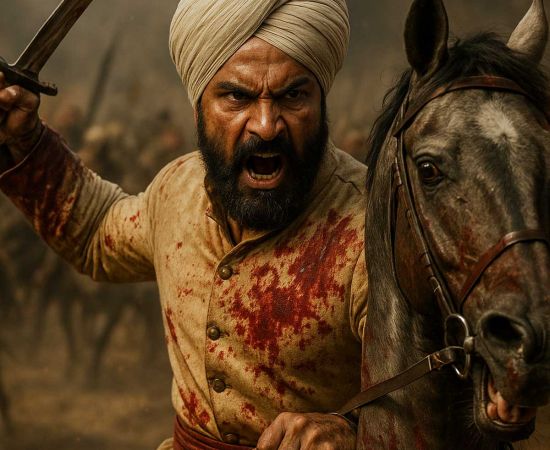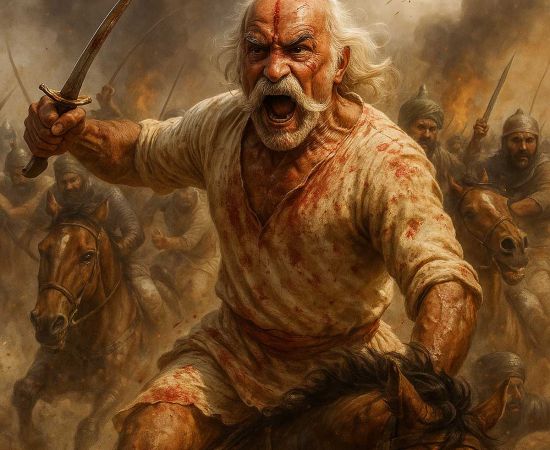MORE COVERAGE
Twitter Coverage
Satyaagrah
Written on
Satyaagrah
Written on
Satyaagrah
Written on
Satyaagrah
Written on
Satyaagrah
Written on
JOIN SATYAAGRAH SOCIAL MEDIA
Khwaja Moinuddin Chisti's real truth: cow was slaughtered in temples every day, Hindu places of worship were razed to the ground
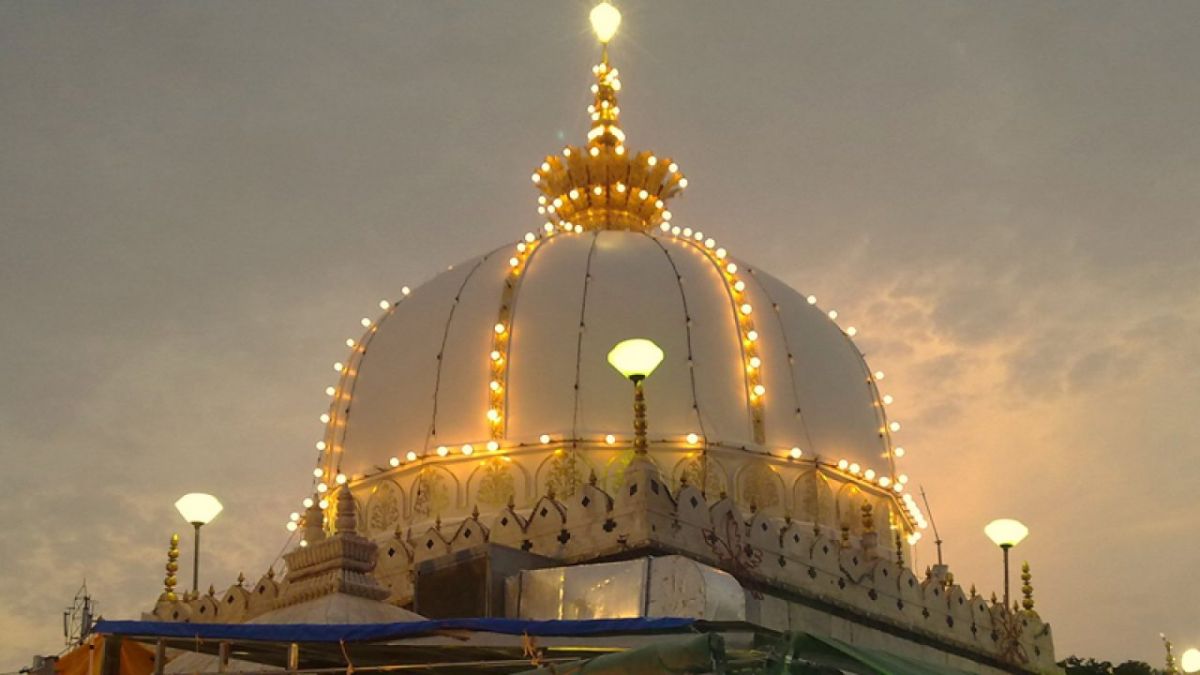
Will talk here of the most revered and tolerant Sufi saints of medieval India. All indications suggest that, instead of taking on a missionary profession for propagating Islam through peaceful means, the Sufis were invariably the spiritual and moral supporter of bloody holy wars that were waged by Muslim rulers. They were even prominent participants in them. In Kashmir, it is the Sufis, who inspired bloody Jihad that involved whole-sale destruction of Hindu temples and idols, slaughter of Hindus and their forced conversion to Islam. The mentality, attitude and actions of these illustrious Sufis saints of medieval India—whether in Ajmer, Bengal, Bijapur, Delhi or Kashmir—differed very little. Hence, the role Sufis played in conversion all over India may not have been very different from the one, they played in Kashmir.
While the tyranny of Islamic rulers and the atrocities they inflicted upon countless Hindus is often discussed, one aspect of the onslaught of Islamic rule in India is often forgotten. Worse, it is even revered, deified and put forth as the face of the tolerant, forgiving and loving side of Islam. It is Sufism. Sufism is described as the mystic, musical Islamic belief where saints and followers seek closeness with Allah through direct personal experience, so the popular definitions claim.
To be noted that the Muslim rulers of India were incessantly undertaking holy wars against the multitude of Hindus. Many of these wars involved mass slaughter of the vanquished and enslavement of tens to hundreds of thousands of women and children for their conversion to Islam. Not a single famous Sufi saint ever objected to this cruel and barbaric practice and means of converting the infidels en masse to Islam. No great Sufi saint of India ever made a statement, condemning these barbaric acts. They never asked the rulers to stop their barbaric expeditions and means of conversion on the pain of death. None of them ever said: ‘Do not capture the Hindus for conversion to Islam in this cruel manner. Leave the job to us. That’s our mission to be achieved thorough peaceful persuasion.’ Instead, they offered unstinted support, indeed encouragement; and even, eager participation, in those barbaric wars.
The instances of Sufis’ involvement in converting the Hindus in Kashmir, Gujarat and Bengal gives clear idea about the means they applied in perfect harmony with their deranged ideology and attitude toward non-Muslims and their creeds. In Kashmir, they were the ones to inspire the rulers to unleash brutality against Hindus and their forced conversion.
In India, while the deification of Mughals as tolerant, loving, kind rulers who brought prosperity to India is rampant, Sufism has been portrayed by Bollywood and popular culture as the “cool” version of Islam. Countless Bollywood songs, Ghazals and Shayaris have been made hailing Sufi saints, music, and dance. Most of them immensely popular. From Khwaja Mere Khwaja in Jodha Akbar to Kun Faya Kun in Rockstar, the list goes on. While Sufism itself may have been tolerant at one point, it evolved in a manner most violent and some who held on to Sufi roots were also persecuted by Islamists.
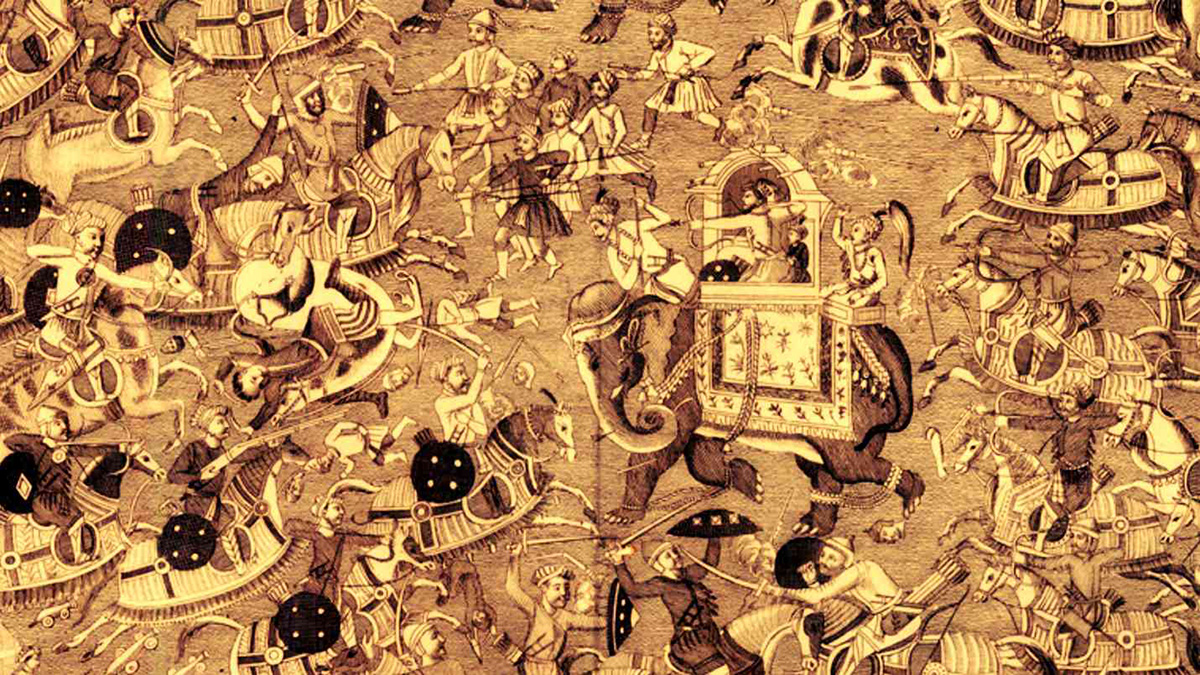 |
Among the Sufi shrines, the shrine of Sufi saint Moinuddin Chishti in Ajmer, Rajasthan is one of the most popular. The shrine invites devotees, Muslims and Hindus both, from all over the world. While the Ajmer Dargah is an important religious centre for Muslims, and even some Hindus, who visit there to get their wishes fulfilled, the history behind Sufi saint Moinuddin Chishti is rather violent, and not very tolerant either.
MA Khan’s book ‘Islamic Jihad, A Legacy of Forced Conversions, Imperialism and Slavery sheds some light upon what the Sufi saints were actually like.
Views of Sufis: In this section, the views of prominent Sufis, particularly of India, on infidels and the violent Islamic doctrines, such as Jihad, will be summarized in order to understand their mind and ideology. Ghazzali, the greatest Sufi ideologue, held rather orthodox and violent views on Jihad. He advised fellow Muslims that,
‘…one must go on Jihad at least once a year… One may use a catapult against them when they are in a fortress, even if among them are women and children. One may set fire on them and/or drown them… One may cut down their trees… One must destroy their useful book (Bible, Torah etc.). Jihadists may take as booty whatever they decide…’
About the protocol of the payment of jizyah in humiliation by a dhimmi, he wrote:
‘…the Jews, Christians and the Majians must pay the jizyah… On offering up the jizyah, the dhimmi must hang his head while the official takes hold of his beard and hits on the protuberant bone beneath his ear.’
Sufism and orthodox Islam
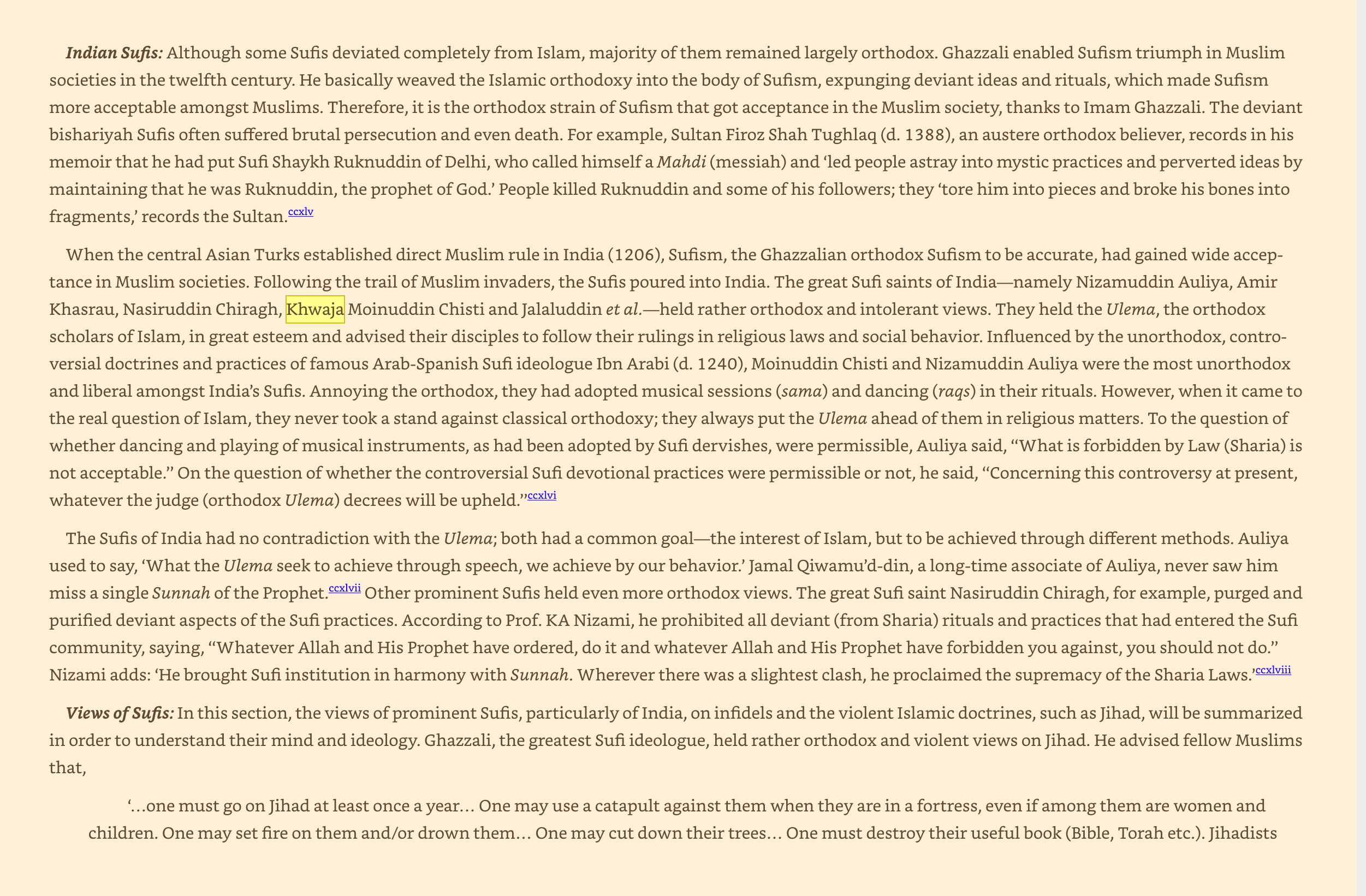 MA Khan’s book Islamic Jihad |
Khan writes that Sufism was not accepted among most Muslims till Imam Ghazzali weaved tenets of Islamic orthodoxy into the body. The sects of Sufism that did not follow the orthodox ways, like the Bishariya Sufis, were brutally persecuted by Islamic rulers.
In India, Firoz Shah Tughlaq has recoded how he had punished the Sufi Shaykh Ruknuddin of Delhi, who had called himself a ‘Mahdi’ (messenger of God). Tughlaq had recorded that the people had torn Ruknuddin and his followers ‘into pieces’ and had ‘broke his bones into fragments’.
Indian Sufism was ‘Ghazzali’s orthodox Sufism
Khan further writes that Sufi leaders had poured into India along with the Turkic invaders and most of them, Nizamuddin Aulia, Aamir Khasrau, Nasiruddin Chiragh, Moinuddin Chishti and Jalaluddin etc, were all known for holding the Ulemas, orthodox Islamic scholars in high esteem. Khan further writes that though Nizamuddin Aulia and Moinuddin Chishti were among the most unorthodox when it came to music and dance, in the matters of Islam and Islamic supremacy, they held the words of the Ulema as sacrosanct.
“What the Ulema seeks to achieve though speech, the Sufis achieve by behaviour,” Nizamuddin Aulia had said. The great Sufi saint Nasiruddin Chiragh had reportedly banned all practices that were deviant from the Sharia.
Sufis, Jihad and ‘infidels’
Khan quotes Prof KA Nizami to describe what the Sufi leader Ghazzali had told in terms of Jihad, the Islamic religious war against Kafirs.
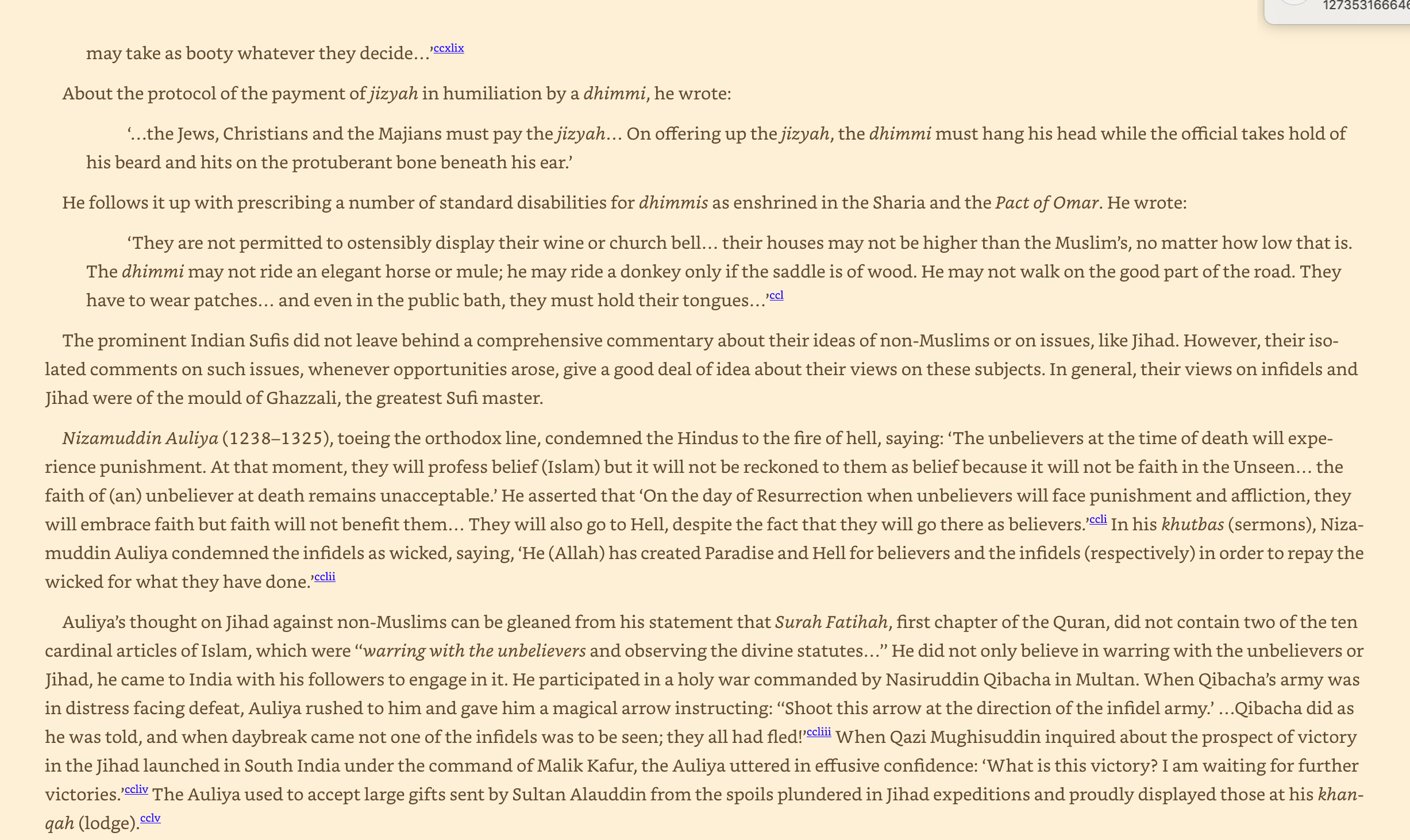 Islamic Jihad by MA Khan |
Ghazzali had written that his followers must go on Jihad at least once in a year and should bring down the fortresses of non-Muslims, they should cut down their throats and drown them and burn their holy books. Jihadists may take whatever booty they desire.
Toeing the orthodox line, Nizamuddin Aulia had condemned the Hindus of India to the ‘fires of hell’. He had also written that even if the non-Muslims embrace Islam, the faith will not benefit them, because they had been unbelievers. He had added, “He, (Allah) has created paradise and hell for the believers and the infidels respectively to repay the wicked they (infidels) have done.”
Khwaja Moinuddin and his Hindu hate
Khwaja Moinuddin Chisti (1141–1230), probably the second-greatest Sufi saint of India after Nizamuddin Auliya, demonstrated a deep-seated hatred toward Hindu religion and its practices.
Records say that the much revered Khawaja of the Ajmer Dargah had a deep-seated hatred towards Hindus. He was among the very first Sufi saints to arrive in India where Delhi was under the rule of Sultan Iltutmish. Having arrived in Ajmer, Chishti reportedly saw a number of temples near the Anasagar lake and promised that he will have them razed to the ground.
Khan writes further that every day, Khwaja’s followers used to bring a cow and they used to slaughter it near a prominent temple where the local Raja and Hindus used to pray, cook kebabs from the cow’s meat to eat, just to show contempt towards the local Hindus.
 MA Khan’s Islamic Jihad |
Chishti had come to India to fight Jihad on the side of the Sultan Muhammad Ghauri against the Hindu King Prithviraj Chauhan. Chishti had credited himself for Prithviraj’s capture, writing, “We have seized Pithaura (Prithviraj) and handed him to the army of Islam.”
Moinuddin and forced conversions of Hindus
Khan writes that none of the Sufi saints had come to India with the idea of ‘peace and love’. Instead, they had come as a part of invading armies or had participated in Jihadi wars against Hindu kings, aimed at capturing their kingdoms and wealth and enslavement of their people. While Moinuddin fought for Mohammad Ghauri, Nizamuddin Aulia had fought for Sultan Alauddin.
 ‘Islamic Jihad’, a book by MA Khan |
Khan writes, Moinuddin and Nizamuddin were among the most revered of the Sufi saints. However, instead of adapting a missionary approach towards spreading Islam, they were the spiritual and moral supporters of bloody Jihad waged by Islamic invaders. In Kashmir, it was the Sufis who had inspired the wholesale level destruction of Hindu temples, the slaughter of Hindus and their forced conversions.
Not a single Sufi saint ever objected to the brutal mass slaughter and forced conversion of Hindus
Khan further writes that while Muslim rules were incessantly undertaking bloody wars against Hindus, calling it Jihad, resulting in the slaughter and enslavement of tens of thousands of Hindus, not a single Sufi saint ever objected to this cruel practice. They never asked the Islamic rulers to stop conversions by the sword and said that they can achieve it by peaceful means. Instead, they went on lending the rulers unflinching support, and even actively participated in their wars.
 MA Khan’s book |
Moinuddin and Ajmer
Khwaja Moinuddin is said to have played an active role in the war by Ghauri against Prithviraj Chauhan. It is also said that he had encouraged forced conversions, slavery and kidnapping of Hindu women.
About Hashmi’s assertion that Islam brought the Sufis—Amir Khasru, Nizamuddin Auliya and Moinuddin Chisti being prominent amongst them —to India, it could bear some credit if Muslim rulers had brought an epocmaking thinker like Aristotle, Isaac Newton or Albert Einsten. However, it is already noted how Amir Khasrau, the allegedly great liberal Sufi poet, took sadistic delight in the destruction of Hindu temples and massacre of Hindus by Islamic marauders. Other greatest Indian Sufi saints, Auliya, Moinuddin Chisti and Shah Jalal et al., came to India for fighting Jihad and slaughtering the Hindus. Auliya expressed delight at the successful
expeditions of massive looting, slaughter and slave-taking in India and happily accepted gifts from the plunder. Other great Sufis, those in Kashmir and Gujarat, inspired and brought terror and destruction upon Indians.
The reverence that the shrine of Khwaja Moinuddin Chishti inspires among his followers is remarkable. Yesterday, journalist Amish Devgan had to apologise on social media after he had mistakenly pronounced ‘Chishti’ instead of Khilji in one of his news debates.
Not just Devgan’s social media timeline was soon filled with hate messages, and even death threats for daring to insult the revered Khwaja, multiple FIRs have now been registered against him by several Muslim individuals and organisations.
Shaykh Mubarak Ghaznavi
Shaykh Mubarak Ghaznavi—a great Islamic scholar and Sufi saint of the Suhrawardi order—had utter disrespect and violent hatred of non-Muslims (kafirs) and their religion, as he reminded the sultans that ‘‘Kings will not be able to discharge their duty of protecting the Faith unless they overthrow and uproot kufr and kafiri (infidelity), shirk (associating partners to God, polytheism) and the worship of idols, all for the sake of Allah and inspired by a sense of honor for protecting the din of
the Prophet of God.’’ However, in case of an impossible situation, he advised, ‘‘…if total extirpation of idolatry is not possible owing to the firm roots of kufr and the large number of kafirs and mushriks, the kings should at least strive to disgrace, dishonor and defame the mushriks and idolworshipping Hindus, who are the worst enemies of God and His Prophet.’
Real Sufi contribution in conversion
If Sufis were to play a major role in the propagation of Islam as popular notion goes, it must have happened in India; because, the Islamic conquest of India started in real earnest right at the time, when Sufism had become properly organized and widely accepted in Muslim societies for the first time. It has been noted that Khwaja Moinuddin Chisti came to Ajmer with Sultan Muhammad Ghauri’s army just when Muslim conquest was making a hold in Northern India. As accounted above, none of the greatest Indian Sufis had a mentality needed for the peaceful propagation of Islam. Khwaja Moinuddin Chisti, Nizamuddin Auliya and Shaykh Shah Jalal came to engage in holy war in India and, indeed, participated in Jihadi wars involving slaughter and enslavement of Hindus. Nizamuddin Auliya encouraged Sultan Alauddin’s
barbaric holy wars and took obvious delight at the victories in his bloodletting Jihad campaigns and delightfully accepted large gifts from the booty.
Few documentations of peaceful conversion by Sufis
Muslim historians have left piles of documentation of the infidels being forced to convert in the battlefields and through enslavement in large numbers in the course of ceaseless Muslim expeditions to all corners of medieval India. Not a single document makes mention of an occasion, in which a Sufi converted the Hindus to Islam in significant numbers through nonviolent means.
Sultan Mahmud enslaved 500,000 Hindus in his first expedition to India, who instantly became incorporated into Islam. Shams Shiraj Afif records that Sultan Firoz Tughlaq converted a great number of Hindus to Islam by offering them relief from the oppressive and humiliating jizyah and other onerous taxes.
According to Afif, he had collected 180,000 Hindus boys as slaves; ‘Some of the slaves spent their time in reading and committing to memory the holy book, others in religious studies, others in copying books.’
General of Akbar, Abdulla Khan Uzbeg, who ruled Malwa for only about two years, had converted 500,000 infidels to Islam through enslavement. The forefathers of today’s Muslims of North West Provinces converted to Islam mostly during the reign of fanatic Aurangzeb in order to avoid persecution, attain privileged rights, and to be relieved of the burdensome discriminatory taxes.
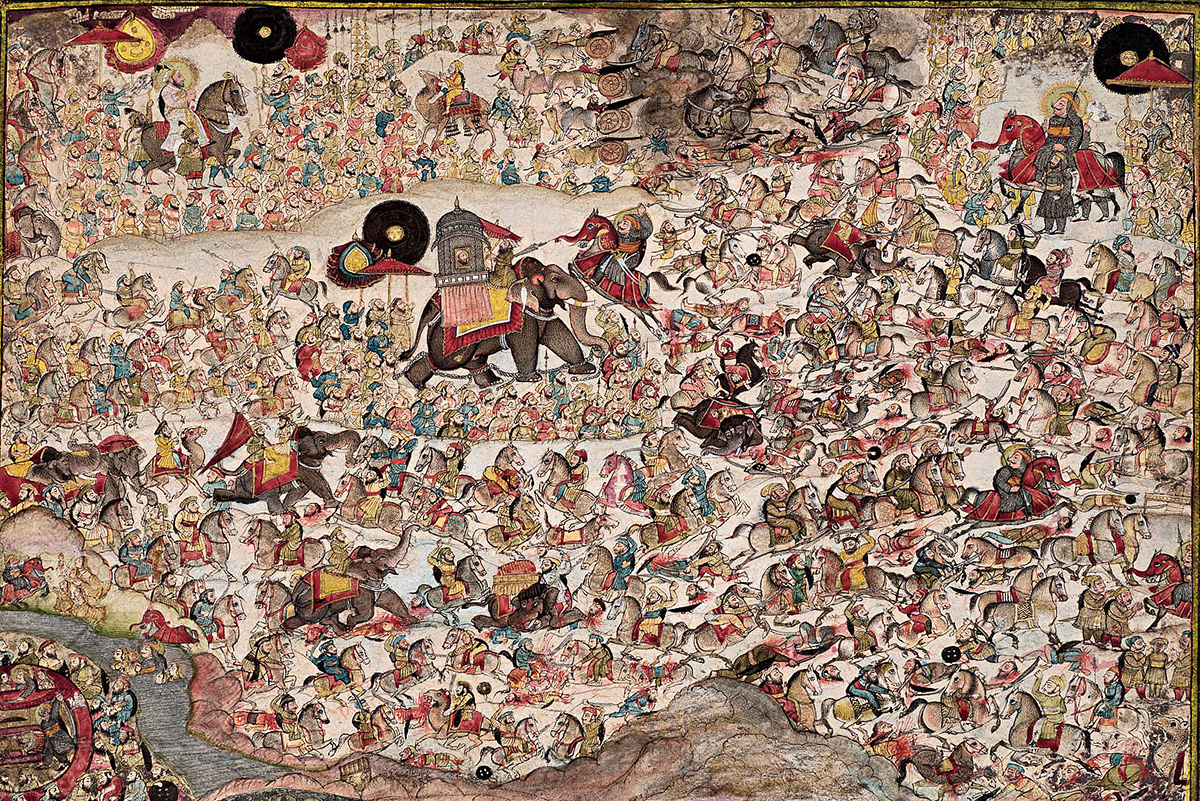 |
Ajmer and the India’s own ‘Rotherham’ scandal
In the early 1990s, a brutal, widespread rape gang had operated in the Ajmer city. Most of the perpetrators were from the families of ‘Khadims’, the families of traditional caretakers of the Ajmer Dargah. Khadims claim to be the direct descendants of the first followers of Khwaja Moinuddin Chishty and hold significant influence in the local communities. The police had stalled the case because the local politicians warned action against the accuse would lead to massive communal tension. The targeted rape and prolonged sexual exploitation of Hindu girls had gone on for years and while the case lingered, many victims, most of them minor girls, had committed suicide or chose to remain silent, for the fear of repercussions.
While the perpetrators may or may not have been the followers of Chishti, the institutionalised hatred against infidels and the religious sanction to treat infidel women as slaves and objects to be ‘owned’ comes from the deep-seated orthodox ideas that remain in the core of most political Islamist ideologies. It is not very different from what Alauddin Khilji did against Rajput kingdoms and what ISIS has done to Yazidis.
Conclusion
Islamist appeasement has reached to such levels in India that even the slightest criticism invites condemnation, and even legal, and judicial ramifications. In 2015, Kamalesh Tiwari, a former leader of the Hindu Mahasabha had commented on the sexuality of Prophet Mohammad. Though criticism and condemnation of statements are as democratic as the freedom to make those statements itself, in case of Kamlesh Tiwari, there were massive rallies taken out by thousand of Muslims where they had openly demanded his beheading. Rallies were taken out with placards literally calling for his head and finally in 2019, he was brutally killed (and beheaded) by some radical Islamists in his office.
While Sufism has been successfully popularised as a mystic, musical and ‘cool’ version of Islam, the ideas sold commercially by music maestros and Bollywood, one cannot ignore the other historical details of slavery, brutality and bloodshed that was heaped upon countless of Hindus to erect the monuments of this notion.
 Support Us
Support Us
Satyagraha was born from the heart of our land, with an undying aim to unveil the true essence of Bharat. It seeks to illuminate the hidden tales of our valiant freedom fighters and the rich chronicles that haven't yet sung their complete melody in the mainstream.
While platforms like NDTV and 'The Wire' effortlessly garner funds under the banner of safeguarding democracy, we at Satyagraha walk a different path. Our strength and resonance come from you. In this journey to weave a stronger Bharat, every little contribution amplifies our voice. Let's come together, contribute as you can, and champion the true spirit of our nation.
 |  |  |
| ICICI Bank of Satyaagrah | Razorpay Bank of Satyaagrah | PayPal Bank of Satyaagrah - For International Payments |
If all above doesn't work, then try the LINK below:
Please share the article on other platforms
DISCLAIMER: The author is solely responsible for the views expressed in this article. The author carries the responsibility for citing and/or licensing of images utilized within the text. The website also frequently uses non-commercial images for representational purposes only in line with the article. We are not responsible for the authenticity of such images. If some images have a copyright issue, we request the person/entity to contact us at This email address is being protected from spambots. You need JavaScript enabled to view it. and we will take the necessary actions to resolve the issue.




















